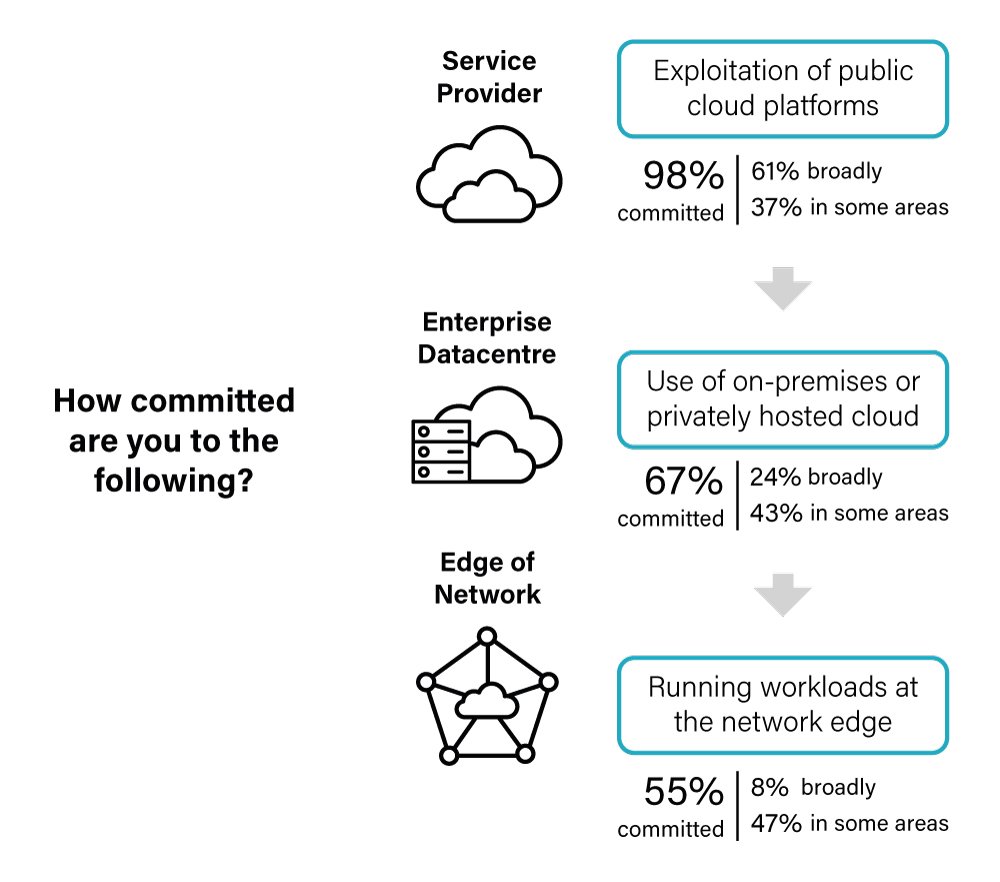With the public cloud, you can have more capacity, scalability and so on, but you are still responsible for data integrity, protection, security and privacy. Reading the fine print in the contract will reveal this, but sadly, that’s a step too often skipped in the haste to click “Accept”.
Fortunately, you don’t have to reinvent the wheel for cloud storage. Most of what you have long been doing for your on-prem storage will still be valid. Indeed, quite a bit of it will still be necessary.
So far, so good, but of course reality is more complicated than that. In a recent study we carried out around hybrid cloud, it was clear that the majority of IT professionals taking part were already using both on-prem or hosted and public cloud platforms, or expected to be doing so in the near future.
 Freeform Dynamics
Freeform Dynamics
When it comes to storage, that means we need to “think hybrid” – and that, in turn, means consistency of management and administration is vital. The last thing you need is one set of policies, controls, tools and processes for data on-prem and another for the cloud. Perhaps even more importantly, our research shows that many organisations are already using multiple public cloud providers – and you certainly don’t want to have to administer each cloud differently.
Make ‘Do it my way’ a selection criterion
So go with your instincts, leverage your experience and apply the same discipline to the cloud as you have done on-prem. To do so, you will probably need to make the ability to do this a selection criterion for cloud services. If the service provider tries to force you to do it their way, don’t use them – other providers, both global and local/regional, are available.
Avoid cloud players that shun standards and emerging or established good practices. Can vendors help? Perhaps. Some do allow you to bridge the gap and drive the consistency you are looking for, but others may encourage you to buy into their way, their architecture. Experience tells you to be very wary of any supplier lock-in.
Getting a solid grip on how to implement, optimise and manage hybrid cloud storage is challenging enough now, but it is only going to get worse. Just think – you may have new edge workloads coming along, or you might be one of the many organisations that recently told us that dynamic delivery methods are forcing frequent migrations of data and services.
Effective data governance is essential
There is also the non-trivial matter of data governance in a hybrid world, especially one where cloud providers offer advanced machine learning and analysis tools that can operate on huge volumes of data coming from multiple sources. Any analysis that includes information from diverse data sources means you must have effective data governance in place.
Why? Putting appropriate usage and location controls on each individual data source is one thing. But now you also need to stop data from multiple repositories, applications or services being combined in ways that legislation may inhibit – for example, combining multiple sources may enable anonymous personal data to be de-anonymised.
The potential legal penalties if you get this wrong can be painful, and you certainly don’t want to face the negative reaction that it can spark from customers, shareholders and perhaps even your co-workers.
The significant question here is: who in your organisation takes responsibility for data governance? Is it the CIO, CDO, “everyone” – or has no one actually ever asked the question?
Look to the future and watch for lock-ins and constraints
All together, you must focus on visibility and openness, and steer well clear of anyone trying to lock you in or constrain your options. The choices you make around data storage and its management need to be able to deal with these trends. Ideally, you should be looking for solutions that will still work not just next quarter or next year, but in five years’ time.
We used to think of storage and data management as relatively slow-moving disciplines – keep safe, don’t disrupt, don’t make changes you don’t have to. That time has gone. Today, unless you have a consistent and coherent strategy and hybrid cloud data management and governance architecture in place across your hybrid estate, you might soon find yourself floundering.
Dale Vile also contributed to this article.

Comentarios recientes